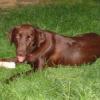Promising sounding results for this in vivo study.
Synapse. 2016 Jan 20. doi: 10.1002/syn.21888. [Epub ahead of print]
Chronic administration of resveratrol prevents morphological changes in prefrontal cortex and hippocampus of aged rats.Resveratrol may induce its neuroprotective effects by reducing oxidative damage and chronic inflammation apart from improving vascular function and activating longevity genes, it also has the ability to promote the activity of neurotrophic factors. Morphological changes in dendrites of the pyramidal neurons of the prefrontal cortex (PFC) and hippocampus have been reported in the brain of aging humans, or in humans with neurodegenerative diseases such as Alzheimer's disease. These changes are reflected particularly in the decrement of both the dendritic tree and spine density. Here we evaluated the effect of resveratrol on the dendrites of pyramidal neurons of the PFC (layers 3 and 5), CA1- and CA3-dorsal hippocampus (DH) as well as CA1-ventral hippocampus, dentate gyrus (DG) and medium spiny neurons of the nucleus accumbens of aged rats. 18-month-old rats were administered resveratrol (20 mg/kg, orally) daily for 60 days. Dendritic morphology was studied by the Golgi-Cox stain procedure, followed by Sholl analysis on 20 month old rats. In all resveratrol-treated rats, a significant increase in dendritic length and spine density in pyramidal neurons of the PFC, CA1 and CA3 of DH was observed. Interestingly, the enhancement in dendritic length was close to the soma in pyramidal neurons of the PFC, whereas in neurons of the DH and DG, the increase in dendritic length was further from the soma. Our results suggest that resveratrol induces modifications of dendritic morphology in the PFC, DH and DG. These changes may explain the therapeutic effect of resveratrol in aging and in Alzheimer's disease. This article is protected by copyright. All rights reserved.
© 2016 Wiley Periodicals, Inc.
Keys word: aging; Resveratrol; dendritic morphology; hippocampus; neuronal plasticity; nucleus accumbens; prefrontal cortex















































